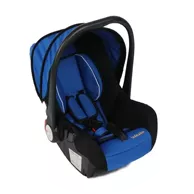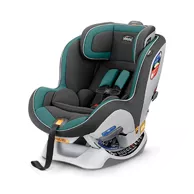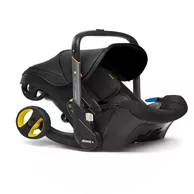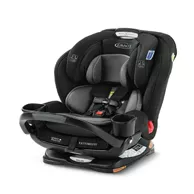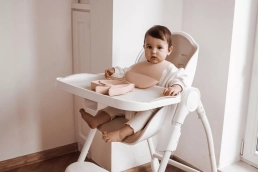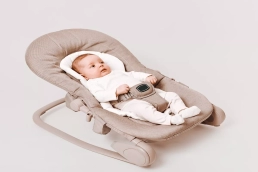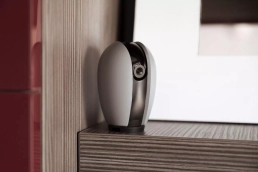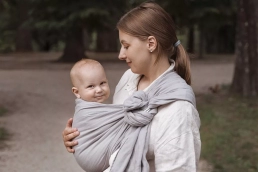Ensuring the safety and comfort of your precious child during car journeys is our top priority as parents. When it comes to choosing the best baby car seat in the Philippines, making an informed decision is crucial. This guide is here to assist you in selecting a car seat that guarantees both safety and comfort while traveling on Philippine roads.
In this comprehensive guide, we explore the essential aspects of baby car seats in the Philippines, covering regulations, types, buying tips, installation instructions, safety recommendations, and FAQs. Whether you’re a first-time parent or experienced one, this article equips you with the knowledge to choose the best car seat for your child’s safety and comfort, ensuring secure and worry-free travels on the bustling roads of the Philippines.
Table of Contents
ToggleBaby Car Seat Regulations in the Philippines
Ensuring the safety of your child while traveling in a vehicle is not just a matter of personal choice; it’s also governed by laws and regulations in the Philippines. Understanding these regulations is essential to avoid legal issues and, more importantly, to protect your child.
Mandatory Use of Baby Car Seats
In the Philippines, the use of baby car seats is mandatory for infants and children under 12 years old. This regulation aims to reduce the risk of injury or fatality in case of a traffic accident.
Age and Weight Restrictions
The specific age and weight requirements for baby car seats can vary by region and local laws. Typically, infant car seats are designed for babies from birth up to 1 year old or weighing around 9 kilograms (20 pounds). However, it’s essential to check the regulations in your specific area for precise guidelines.
Proper Installation
It’s not just enough to have a car seat; it must also be correctly installed. Follow the manufacturer’s instructions for installation, and ensure that the car seat is securely fastened in your vehicle. Improper installation can reduce the effectiveness of the seat in protecting your child.
Penalties for Non-Compliance
Violating baby car seat regulations can lead to fines and penalties. The amount can vary, so it’s crucial to be aware of the consequences in your area.
Local Government Regulations
In addition to national regulations, some cities or municipalities in the Philippines may have their own specific rules regarding baby car seats. Be sure to check with your local authorities to stay compliant.
Regular Checks and Inspections
Periodically inspect your baby’s car seat for wear and tear, and ensure it meets safety standards. Manufacturers may issue recalls or safety updates, so it’s vital to stay informed.
Education and Awareness
Authorities often conduct awareness campaigns and educational programs to inform parents and caregivers about the importance of baby car seats and the relevant regulations.
Types of Baby Car Seats
Infant Car Seats
Designed for newborns and infants, these car seats provide excellent support for the tiniest passengers. They often come with a detachable carrier, making it easier to move your baby in and out of the car without disturbing their sleep.
Convertible Car Seats
These versatile car seats can adapt as your child grows. They can be used in both rear-facing and forward-facing positions, making them a cost-effective choice for many parents.
Booster Car Seats
Booster seats are suitable for older kids who have outgrown their forward-facing car seats. They elevate the child to the right height, allowing the seatbelt to fit correctly.
All-in-One Car Seats
As the name suggests, these car seats offer all-in-one functionality. They combine features of infant and convertible seats, accommodating children from infancy to toddlerhood.
Choosing the Right Car Seat
Selecting the appropriate car seat for your child is a critical decision to ensure their safety while traveling. Here are some essential steps to guide you:
Consider Your Child’s Age, Weight, and Height
Car seats are designed with specific weight and height limits in mind. Choose a seat that matches your child’s current measurements. Follow the manufacturer’s guidelines to ensure a proper fit.
Check for Compatibility with Your Vehicle
Not all car seats fit all vehicles equally. Make sure the car seat you choose is compatible with your car’s make and model. Consult the car seat manufacturer’s website or customer service for assistance.
Choose a Seat That Allows Rear-Facing for As Long As Possible
Rear-facing car seats provide the best protection for infants and young children. It’s recommended to keep your child in a rear-facing seat until they reach the maximum weight or height allowed by the seat.
Consider Your Child’s Comfort
Comfort matters during long rides. Look for seats with adequate padding and cushioning to keep your child cozy. Adjustable recline options can also add to their comfort.
Evaluate Ease of Use
Car seats should be easy to install and adjust. Read reviews and check for user-friendly features, such as simple harness adjustments and clear installation instructions.
Check Safety Standards
Ensure that the car seat meets safety standards and regulations. Look for labels indicating compliance with Federal Motor Vehicle Safety Standards (FMVSS) and certification from recognized organizations.
Account for Growth
If you plan to use the car seat for an extended period, consider convertible or all-in-one car seats that can accommodate your child as they grow.
Think About Your Lifestyle
Consider how the car seat fits into your daily routine. Some car seats are designed for easy removal, making them suitable for families with multiple cars.
Budget Wisely
Quality car seats come at various price points. While it’s important not to compromise on safety, there are excellent options available in every budget range.
Review of the Best Baby Car Seats in the Philippines
1. Akeeva 360 Rotate Isofix Car Seat
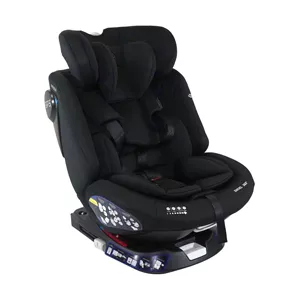
The Akeeva 360 Rotate Isofix Car Seat is a car seat designed to rotate fully, allowing for easy access when placing your child in or taking them out of the seat. It also includes an adjustable headrest for added comfort.
Key Features:
- This car seat’s ability to rotate 360 degrees simplifies the process of getting your child in and out of it
- The Isofix installation system ensures a stable and secure base for the car seat
2. Aprica Bettino Baby Car Seat
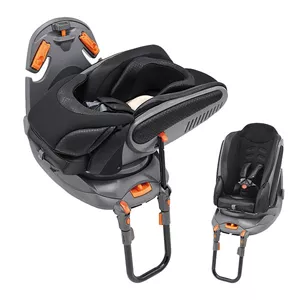
The Aprica Bettino Baby Car Seat is specially designed for infants and toddlers, prioritizing safety and comfort. It offers several useful features:
Key Features:
- Extended Rear-Facing Option
- ISOFIX Installation
- Egg Shell Protection
- Fully Reclining
- Head and Neck Stabilization
- Side-Impact Protection
- Five-Point Harness
3. Britax Safeguard Convertible Baby Car Seat
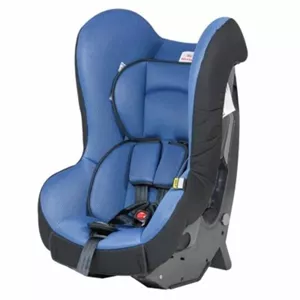
The Britax Safeguard Convertible Baby Car Seat is a versatile car seat created to meet the requirements of growing kids. It provides safety and comfort features ideal for babies and young children.
Pros:
- Simple installation
- Outstanding safety features
- Maintains durability over time
Cons:
- Adjusting the base is challenging
- The LATCH system is not as user-friendly
- It is relatively heavy to carry
- Removing the car seat from the vehicle is tricky
4. Chicco NextFit IX Convertible Baby Car Seat
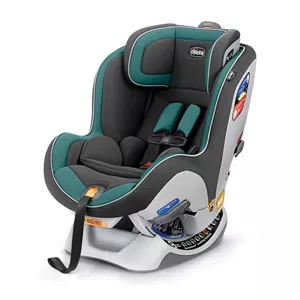
Best in Safety-Focused Baby Car Seat
The Chicco NextFit IX stands out as a quality convertible car seat, boasting several attractive features. These include a removable cover for effortless cleaning, premium LATCH connectors, and plush padding with soft fabric.
Pros:
- Simple installation process
- Nine recline positions for added convenience
- No-rethread harness for ease of adjustment
- Belt lockoffs for hassle-free seat belt installation
- Deep side wings offering side impact protection
- User-friendly push button lower anchor connectors
- Suitable for most newborns
Cons:
- Bulky and heavy
- Not the optimal choice for accommodating three car seats or individuals
- Demonstrates average performance in terms of ease of use
5. Combi Coccoro Baby Car Seat

The Combi Coccoro stands out as a convertible car seat, offering both rear and forward-facing options for children weighing between 5-40 lbs and measuring under 40 inches in height.
Pros:
- Remarkably adjustable, fitting snugly even in cramped spaces
- Features a washable, detachable cover, and harness pads for easy cleaning
- Its low initial weight, combined with the newborn insert design, makes it suitable for small infants
- Compact size, ideal for snug fits in smaller vehicles
Cons:
- Rear-facing installation can be challenging
- Limited weight capacity, accommodating only up to 40 lbs
6. Doona Baby Car Seat and Stroller
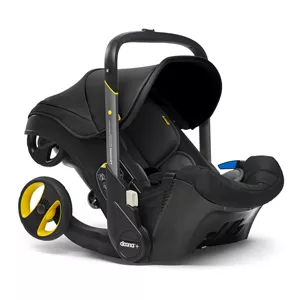
Best in Travel System Baby Car Seat
The Doona Baby Car Seat and Stroller is a versatile travel solution designed to make life easier for parents on the go.
Pros:
- Convenient 2-in-1 design as a car seat and stroller.
- Easy transition from car seat to stroller without removing your baby.
- Compact and space-saving, great for small cars and urban living.
- Stylish and modern appearance.
- Comfortable for the baby with plush padding.
- Meets safety standards for car seats.
Cons:
- Can be relatively heavy.
- Limited use as a baby stroller for older toddlers
- Not fit on larger infants comfortably
7. Flotti Luna Baby Car Seat
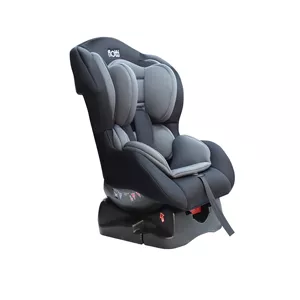
The Flotti Luna Baby Car Seat is a specially designed car seat for newborns, and it can be used until your child reaches a weight limit, typically around 2 years old. One of its standout features is its 360-degree swivel mechanism, which ensures safe and easy seating. Plus, it comes in two stylish colors: gray and wine red.
Key Features:
- 360-Degree Swivel Mechanism: This car seat boasts a unique 360-degree swivel feature, making it simple and safe to place your baby inside.
- It’s suitable for newborns and can accommodate your child until they reach the seat’s weight limit.
- You can choose from two attractive colors: gray and wine red
8. Graco CS Extend2Fit 3-In-1 Baby Car Seat
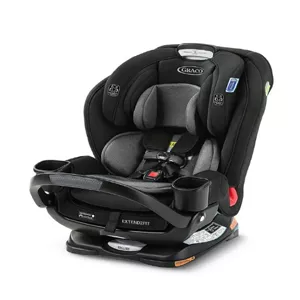
Best Convertible Baby Car Seat
The Graco Extend2Fit 3-in-1 Car Seat is crafted to accommodate kids from 4 to 100 pounds. It can be adjusted to provide an additional 5 inches of legroom when installed in the rear-facing position, allowing your child to safely ride facing the rear for a longer time.
Pros:
- Generous 50 lbs.
- Versatile with 6 recline settings
- Robust steel-reinforced frame
- Premium push-on LATCH connectors
- Convenient dual cup holders
- Easy to clean with a machine-washable cover
- FAA-approved for aircraft use
- Longevity with a 10-year lifespan
Cons:
- Recline position #4 mandatory for forward-facing under 40 lbs
9. Giant Carrier Baby Car Seat
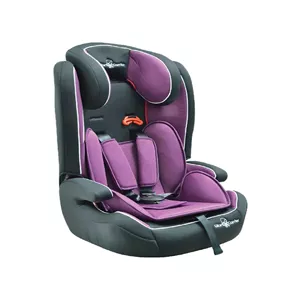
The Giant Carrier Baby Car Seat is a child safety seat designed to provide comfort and security during car travel. It’s engineered to ensure your child’s safety while offering convenience for parents.
Pros:
- The 5-point harness and side-impact protection prioritize your child’s safety
- Adjustable recline
- Easy to carry and switch between vehicles.
- Easy to clean and maintain
- Suitable for various age groups, providing long-term use.
- Aesthetic appeal
- Streamlines installation for added convenience.
- FAA approve
- It is affordable without compromising on safety
Cons:
- It has limitations for larger toddlers
- Limited color options
- It is bulky for smaller vehicles with limited space
10. Joie Steadi Baby Car Seat
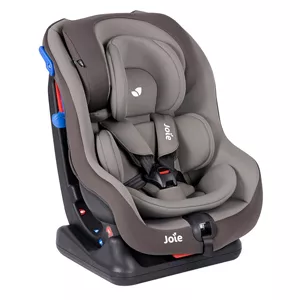
The Joie Steadi Baby Car Seat is an affordable car seat engineered to adapt as your child grows, accommodating them from birth up to 18kg (approximately 4 years old). This allows your child to travel facing the rear for an extended period.
Key Features:
- Budget-friendly
- Designed for your child’s comfort and built to last
- Suitable for use for up to four yearsAdjustability
- Convenient adjustments to suit your child’s needs.
- Can be installed for front or rear-facing travel.
- Equipped with a 5-point harness
- With multiple recline positions
- Includes side-impact protection
- Covers are removable and washable
- Can be easily installed using a 3-point seat belt
11. Mifold Grab-and-Go Car Booster Seat
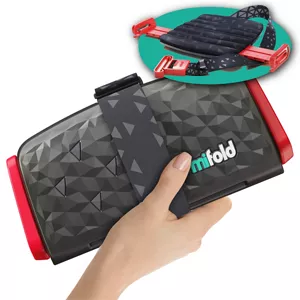
The Mifold Grab-and-Go Car Booster Seat is a compact and highly portable booster seat, designed for convenience and ease of use. It’s ingeniously crafted to fold in half, resembling a clamshell, making it incredibly portable.
Pros:
- The Mifold booster seat is compact and easy to carry
- It can be adjusted to fit your child comfortably
- User-friendly design
Cons:
- Not suitable for all vehicle types
- It is more expensive compared to some other booster seats available in the market
12. Phoenix Hub LM211 Baby Car Seat
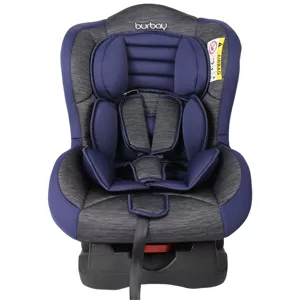
The Phoenix Hub LM211 Baby Car Seat stands as a top-tier child safety travel seat, offering an adaptable base for children.
Pros:
- The all-inclusive design eliminates the need for purchasing multiple car seats as your child matures
- The adjustable base ensures a cozy and secure fit for children
- It includes a complimentary car seat travel bag and a cushioned seat pad
Cons:
- The car seat’s bulk and weight make it challenging to transport
13. Space Baby 4 in 1 Baby Car Seat
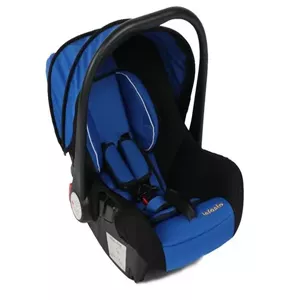
Shopee’s Top Choice
The Space Baby 4 in 1 Baby Car Seat is a versatile and safe solution for parents on the go. This innovative car seat is designed to adapt to the changing needs of your child as they grow, providing comfort and security throughout their early years.
Pros:
- This car seat serves as a rear-facing infant seat, a forward-facing toddler seat, a high-back booster, and a backless booster
- Equipped with a 5-point harness system, side-impact protection, and energy-absorbing foam
- The Space Baby car seat is user-friendly
- Padded cushioning and adjustable headrest
- Made from high-quality materials
Cons:
- As a 4-in-1 seat, it is larger than dedicated infant or toddler seats
- The versatility and added safety features result in a heavier car seat.
How to Install Your Baby Car Seat
Properly installing your baby’s car seat is crucial for their safety during travel. Follow these steps to ensure correct installation:
1. Read the Manual
Start by thoroughly reading the car seat manual. Each car seat model may have specific installation instructions, so it’s essential to understand them.
2. Choose the Right Location
Place the car seat in the back seat of your vehicle. The center position is generally the safest, but if your car’s manual recommends another spot, follow that advice.
3. Use the LATCH System or Seatbelt
Car seats can be secured using either the Lower Anchors and Tethers for Children (LATCH) system or the seatbelt. Follow the manufacturer’s instructions to decide which method to use based on your car seat and vehicle.
4. Secure the Base
If you’re using an infant car seat with a base, secure the base first. Ensure it’s level with the ground and doesn’t move more than an inch in any direction.
5. Place Your Child on the Seat
Put your child in the car seat and fasten the harness according to the manufacturer’s guidelines. Ensure that the harness straps lie flat and snugly against your child without twists.
6. Check Harness Height
Adjust the harness height so it’s at or just below your child’s shoulders for rear-facing seats and at or just above the shoulders for forward-facing seats.
7. Tighten Straps Properly
Make sure the harness straps are snug but not overly tight. You should be able to slip just one finger between your child’s collarbone and the harness strap.
8. Use the Chest Clip
The chest clip should be positioned at armpit level to keep the harness straps in the correct place.
9. Test for Proper Installation
Once the car seat is installed, give it a firm tug to check for any looseness. It should not move more than an inch in any direction.
10. Check the Angle
For rear-facing seats, ensure that the car seat is at the correct recline angle. Refer to your car seat manual for guidance.
11. Register Your Car Seat
It’s essential to register your car seat with the manufacturer so you can receive any recall notifications or safety updates.
12. Seek Professional Help if Needed
If you’re unsure about the installation or have trouble securing the car seat correctly, don’t hesitate to seek assistance from a certified Child Passenger Safety Technician (CPST).
Safety Tips for Baby Car Seats
Ensuring your child’s safety while traveling in a vehicle is of utmost importance. Here are some crucial safety tips to keep in mind when using baby car seats:
Position the Car Seat in the Back Seat
The safest place for a baby car seat is in the back seat of your vehicle. It’s essential to avoid placing it in the front seat, especially if your vehicle has an active airbag on the passenger side.
Follow the Manufacturer’s Instructions
Always adhere to the manufacturer’s guidelines for installing and using the car seat. These instructions are specific to the model and are designed to ensure maximum safety.
Harness or Seat Belt Use
Depending on the type of car seat, use either the harness or seatbelt to secure your child. Ensure that the harness straps are snug but not overly tight, with no twists. If using a seatbelt, make sure it’s properly threaded through the car seat.
Keep the Car Seat Clean and Well-Maintained
Regularly clean and inspect the car seat for any wear and tear. Follow the manufacturer’s recommendations for cleaning to maintain its integrity.
Regularly Inspect for Wear and Tear
Check the car seat regularly for signs of damage, including cracks, loose parts, or fraying straps. If you notice any issues, discontinue use and consult the manufacturer for repairs or replacement.
Ensure the Correct Recline Angle
For rear-facing car seats, it’s crucial to have the correct recline angle. Refer to the manufacturer’s instructions to ensure that the car seat is properly positioned.
Avoid Bulky Clothing
Do not place thick or bulky clothing, such as winter coats, between your child and the harness straps. Bulky clothing can compress in a crash, leaving the harness too loose to be effective.
Properly Adjust the Chest Clip
The chest clip should be positioned at armpit level to ensure the harness straps are in the right place.
Secure Loose Items
Secure loose items in the car, as they can become projectiles in the event of a sudden stop or crash. These items can pose a danger to both the child and other passengers.
Follow Local Regulations
Be aware of and follow local regulations regarding the use of baby car seats. Regulations may vary from one area to another.
Replace After an Accident
If your vehicle is involved in an accident, replace the car seat even if it doesn’t show visible damage. The forces involved in a collision can compromise the seat’s safety.
Personal Insights and Recommendations
As a parent, my personal experience with baby car seats is invaluable. I can vividly recall the day I brought my newborn home and securely strapped him into his car seat for the first time. Safety, without a doubt, is of utmost importance. Always ensure a snug fit, buckle up securely, and select the appropriate seat for your child’s age and size. However, beyond safety, comfort is also a key consideration. Additional padding and adjustable features can make those long drives more comfortable for your little one. Lastly, remember to periodically double-check the installation, as it may loosen over time. Your baby’s well-being on the road is well worth the extra care and attention.
Frequently Ask Questions About Baby Car Seats
Are baby car seats mandatory in the Philippines?
Yes, it is mandatory to use a baby car seat for infants and children under 12 years old.
Why do I need a baby car seat?
Baby car seats are designed to provide maximum safety for infants and children during car journeys. They reduce the risk of injury in case of accidents, making them essential for your child’s protection.
When should I transition my child to a booster seat?
Transition to a booster seat when your child reaches the weight or height limit of their current car seat, typically around 40 pounds or 4 years old.
Can I use a second-hand car seat?
It’s not recommended, as you may not know the seat’s history or if it has been in an accident.
How do I clean a baby car seat?
Follow the manufacturer’s cleaning instructions, typically using a mild detergent and warm water.
What should I do if my car seat is involved in an accident?
Replace the car seat immediately, even if there are no visible damages.
Are there any subsidies or assistance programs for baby car seats in the Philippines?
Check with local authorities or non-profit organizations for assistance programs.
What is the difference between an infant car seat and a convertible car seat?
Infant car seats are designed for newborns and can be removed from the car with a detachable carrier. Convertible car seats can be used in both rear-facing and forward-facing positions, making them suitable for a wider age range.
How can I keep my baby comfortable in their car seat during long journeys?
To keep your baby comfortable, dress them in layers so you can adjust for temperature changes. Ensure the harness is snug but not too tight, and provide entertainment and snacks to keep them occupied during the ride.
Are there any subsidies or financial assistance programs for baby car seats in the Philippines?
Some local authorities or non-profit organizations may offer assistance programs or discounts for low-income families to obtain baby car seats. Check with relevant agencies for information.
Conclusion
Choosing the right baby car seat in the Philippines is crucial for your child’s safety. Remember to consider their age, weight, and height, and always follow the local regulations. With the information provided in this guide, you can confidently select the perfect car seat for your little one.
Written By
With a solid foundation in family dynamics, child development, and a knack for assessing products, our content is built on a strong grasp of our topics. We use trustworthy sources, seek advice from experts, and stay current with the latest happenings in our fields. We always give credit to our sources, reveal any possible conflicts of interest, and deliver info in a truthful and unbiased way. Follow us on Facebook or join our Facebook Group.
Start your journey to confident parenting
Join over 2,000+ parents who receive free practical advice and tips from Joyful PH. Unsubscribe anytime.
You may also like
11 Best Baby High Chairs in the Philippines
In the Philippines, where family meals are a cherished tradition, finding the…
11 Best Nursing Pillows in the Philippines
When it comes to nursing pillows, finding the perfect one can make a world of…
13 Best Baby Bouncers in the Philippines
The journey of baby bouncers in the Philippines is a fascinating evolution that…
13 Best Baby Toothbrushes in the Philippines
Getting the right toothbrush for your baby is essential for their oral health.…
11 Best Baby Monitors in the Philippines
Baby monitors have become a crucial tool for parents in the Philippines,…
13 Best Baby Carriers in the Philippines
When it comes to caring for your baby, choosing the right baby carrier is of…


